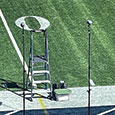The saxophone’s design is among the most logical and sleek of the woodwinds, but it includes trills and transitions that seem difficult or impossible to those unfamiliar with the instrument’s secrets.
The Lowest Depths
The only two truly impossible saxophone trills or tremolos are at the bottom of the range. The low Bb/A# to B trill and the low C to Eb tremolo cannot be performed effectively. However, some pieces may call for quick transitions between these pitches, especially in the tenor and baritone parts.
The inability of many students to quickly and effectively navigate the pinky keys may be a result of poor instrument set-up. If a student is struggling to move quickly between low notes, check that all of the pinky keys and rollers on the instrument are level, with no gaps. Mistreatment by the student or ineffectual service by a careless repair technician can greatly increase the difficulty level of execution in this register.
If all is well mechanically and students need to transition between the above pitches quickly, it will help to place a tiny dot of key-oil on the pinkies. This will lessen the friction, and insure smoother sliding of the pinky across the rollers.
Another transition that should be mentioned is the trill between low C# and D. There is no need to release both pinkies, and not only is it difficult to move both pinkies precisely in time, this is likely to produce considerable key noise. Leave the left pinky depressed. This would be highly undesirable for a tone and intonation on a sustained D, but it works fine for trills. The fast motion between notes will hide any adverse side effects.
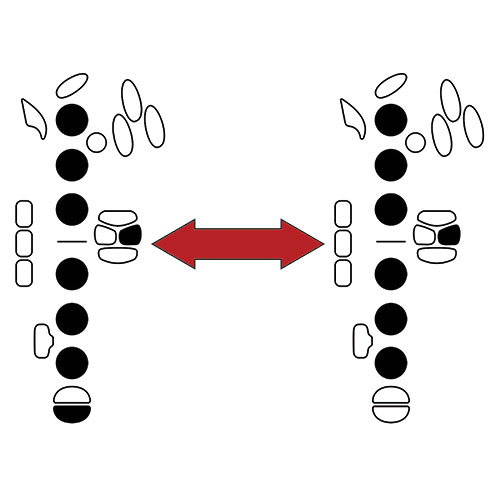
Eb to E
Notes that require students to trill both the third and fourth fingers can be problematic, as the natural inclinations of the fingers and mechanical attributes of the saxophone might result in keys coming up or down at different rates. For Eb to E, leave the pinky down and trill only the third finger. This fingering works in either octave but should only be used for trills.
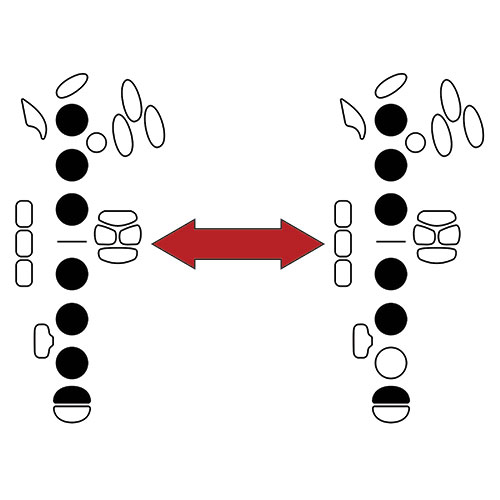
Independence of the third finger is the key to success for this fingering, as well as the G# to A alternate found below. There are several exercises to aid in this, but one of the best is quite simple and can be done virtually anywhere. First, lay both hands palms-down on a flat surface with the fingers outstretched and relaxed. Move each pair of fingers up and then back to the flat surface, beating slow eight-notes for four counts. Start with the thumbs, then the index, middle, ring, and finally pinky fingers. Move the fingers as far off of the surface as possible without moving any other fingers or any other portion of the hand. Start slowly, building range of motion first, and then speed. This exercise will eventually yield far greater independence for all fingers, put especially the ring finger/pinkie pair, which will aid in many aspects of technical facility on the saxophone – or any other woodwind.
F to F#
It is impossible to switch between the standard F fingering and standard F# fingering without alternating between the first and second fingers of the right hand, and even the finest saxophonist will find it nearly impossible to eliminate the noise that results. Instead, it is advisable in any trill to use the F# trill key, which is played with the third finger of the right hand. Unlike many of the fingerings discussed in this article, this alternate F# should sound quite similar to the normal fingering and should be used in any chromatic ascending passage (resort to the traditional F# fingering for any chromatically descending passage, however).
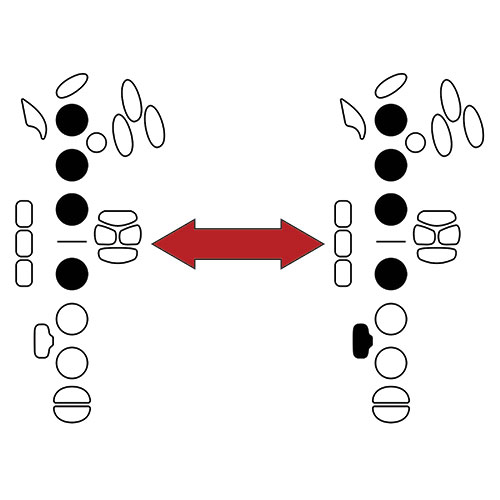
G# to A
As noted above, if it is possible, avoid moving the third and fourth fingers at the same time. The G# to A trill can be particularly noisy, so once students have achieved some level of finger independence, they should leave the G# key down while trilling to the A. This trill fingering should never be used if the A is to be held out for any length of time.
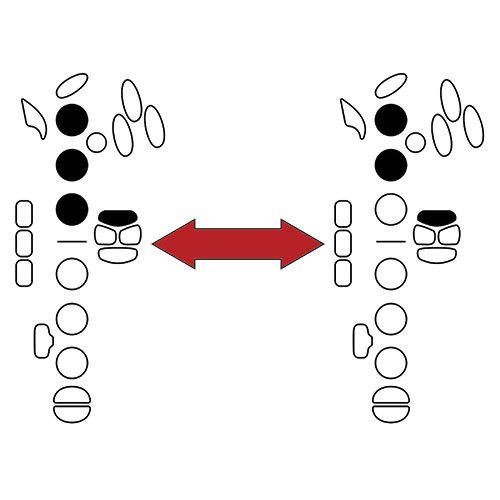
A to Bb
This fingering is known to most band directors and students, but it bears repeating that the side key trill is by far the most effective option for a trill between these notes.
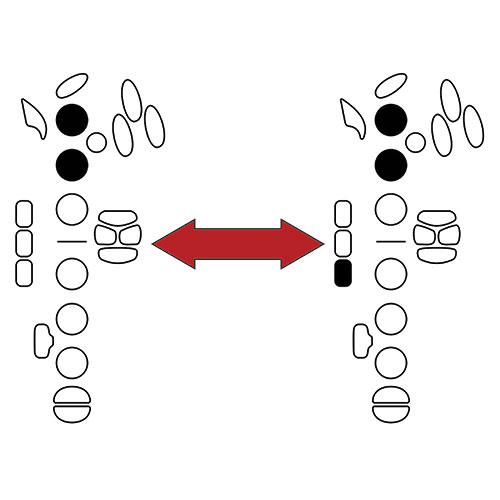
A# to B
The A# to B trill is seemingly easy. Many saxophone students around the country learn the one-and-one fingering, using the first fingers of each hand to produce Bb/A#, as on flute. However, this fingering has a host of tonal and intonation deficiencies, and even at the quick clip of a trill, the pitch will sag noticeably and tremendously. Instead, this alternative is far easier and more accurate, even if it does look a bit odd at first. Only use this fingering for B in trills.
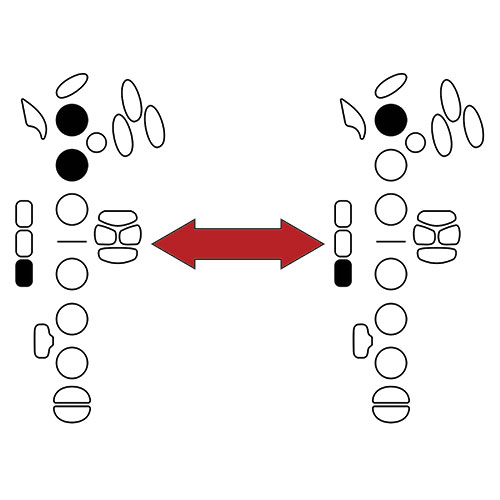
B to C
This is a well-known fingering. However, the side C should only be used for trills or very fast passages with C as their highest pitch. Otherwise, flipping to the traditional C5/C6 fingering yields far better timbral results.
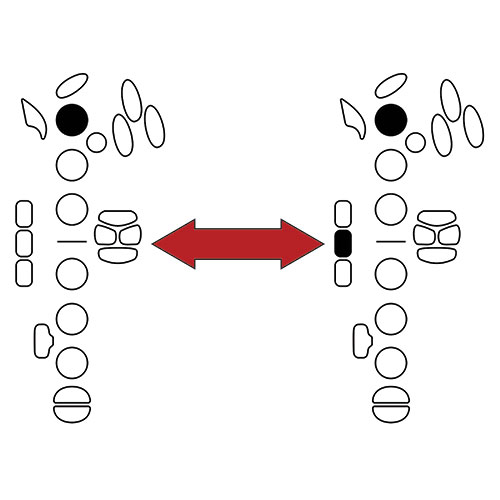
This C fingering is ineffective when trilling from Bb to C, even when using the bis Bb, as the pitch of the side C is unacceptable in this scenario. Instead, the following is far more effective when trilling from Bb to C. Again, never depress the side Bb key when holding the C for any length of time.
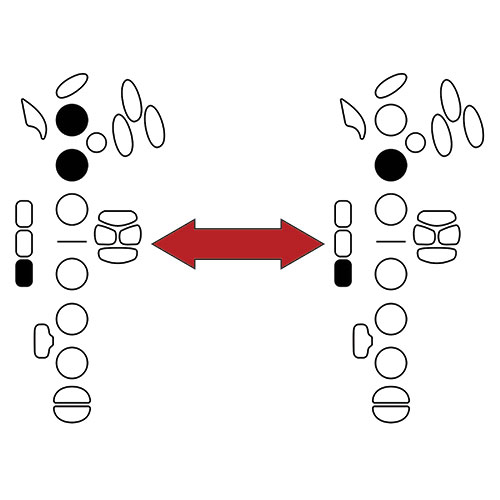
Across the Octave Break
Perhaps the most commonly encountered trill is that from C5 to D5, across the saxophone’s octave break. If using standard fingerings for this action, it is nearly impossible to play this trill in a controlled manner. There will always be some level of inaccuracy when calling upon that many fingers to act in absolute coordination that quickly. Instead, use the Eb palm key, which will sound D in this trill. This same fingering for D works when trilling from C#5 to D5 and for tremolos from B4, Bb4, or A4 to D5.
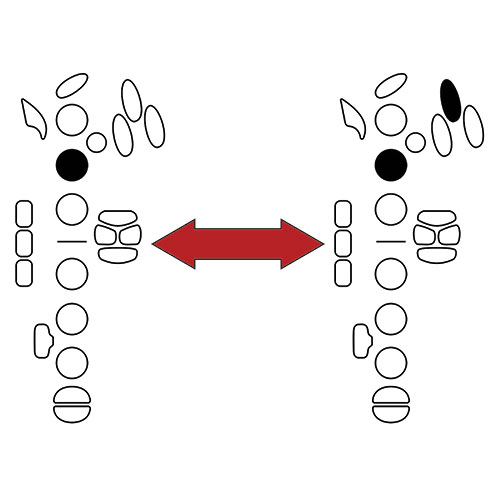
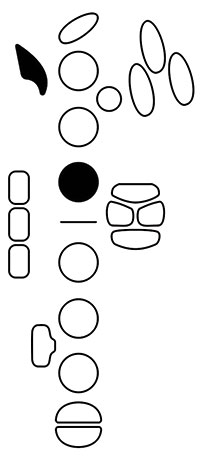 It is worth noting that there is a far superior fingering for C#5. The standard fingering can be insubstantial in timbre and low in pitch. This alternate covered C#5 works in all but the most technical passages and greatly improves and softens transitions across the octave. This covered C# can also be used in conjunction with the D trill fingering.
It is worth noting that there is a far superior fingering for C#5. The standard fingering can be insubstantial in timbre and low in pitch. This alternate covered C#5 works in all but the most technical passages and greatly improves and softens transitions across the octave. This covered C# can also be used in conjunction with the D trill fingering.
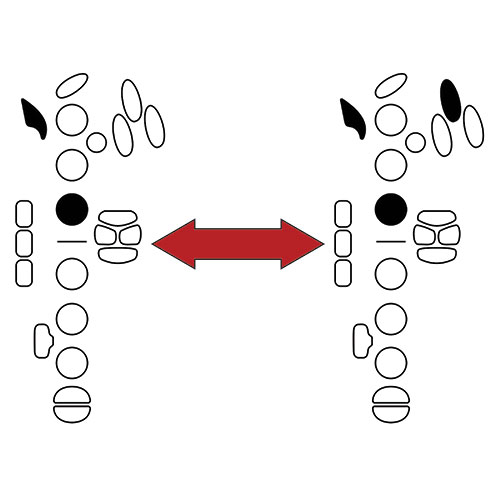
Great trill/tremolo fingerings also exist for moving to D#/Eb5 and E5. The tremolo fingering between C5 and Eb5 uses the high F palm key. This fingering also work for tremolos from B4 and Bb4.
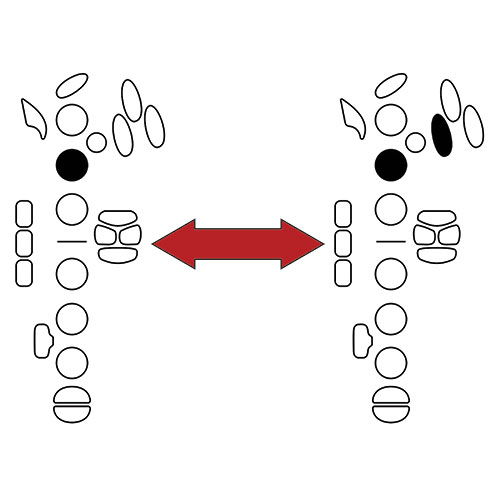
If a saxophonist has an instrument with a high F# key, the player can tremolo from C5 to E5 by fingering C5 and trilling with the high F# key. This also works for B4 and Bb4.
All of the above fingerings work well for trills and quick passages that only briefly ascend above the octave break. Passages that descend to a C#5 but otherwise reside mainly above the break are made much simpler with alternate forms of the covered fingering for C#. For instance, quick motion between C# and D that must then continue upwards can be executed more effectively with the following:
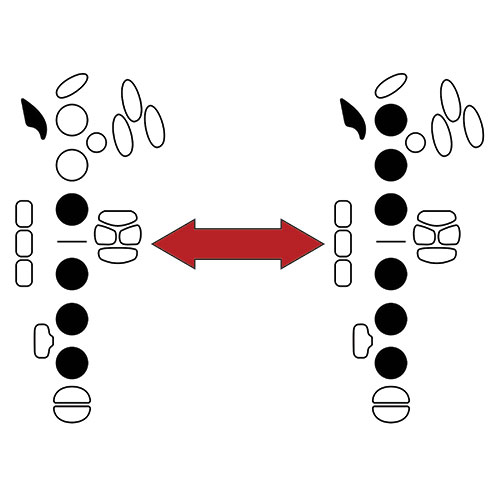
This same concept can be used for motion between C# and notes higher than D5.
The Articulated G# Mechanism
An F# to G# trill may seem daunting, requiring the right-hand middle finger to be lowered while the left pinkie is raised. However, unlike many other woodwinds, the saxophone possesses an articulated G# mechanism that automatically closes the open G# tone hole whenever any finger of the right hand is depressed. The saxophonist can hold down the G# fingering in the left hand while depressing and releasing the F# key in the right hand with no adverse consequences.
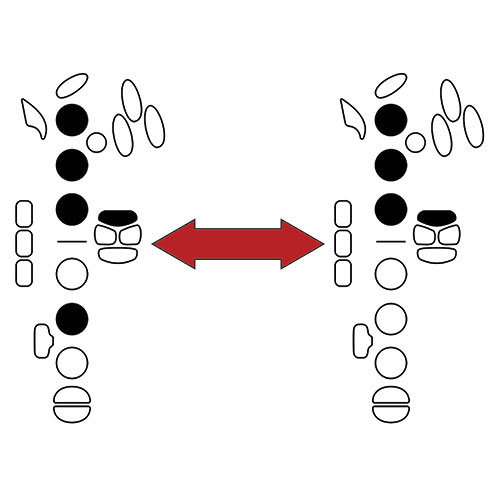
Similarly, the articulated G# mechanism allows any of the left-hand pinkie keys to produce the G# when no right-hand keys are depressed. A leap or a tremolo from C# to G# becomes much easier when this is taken into consideration. The adjustment screws for the articulated G# mechanism are often the cause of small mechanical problems after a saxophone is dropped.
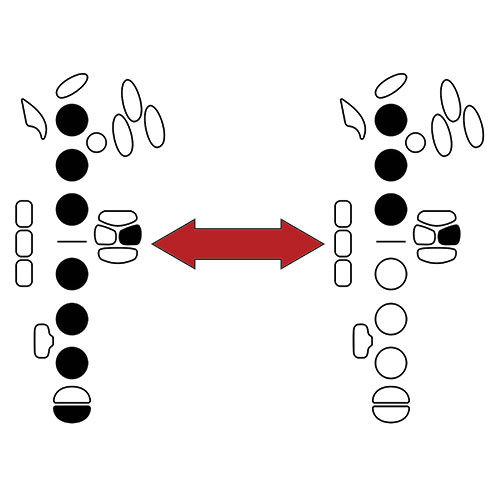
Conclusion
Although it possesses one of the most elegantly-designed keyworks of any woodwind, there are still secrets that lurk. When you demystify the few seeming impossibilities of saxophone technique your students will achieve better, easier, and more satisfying performance results.



